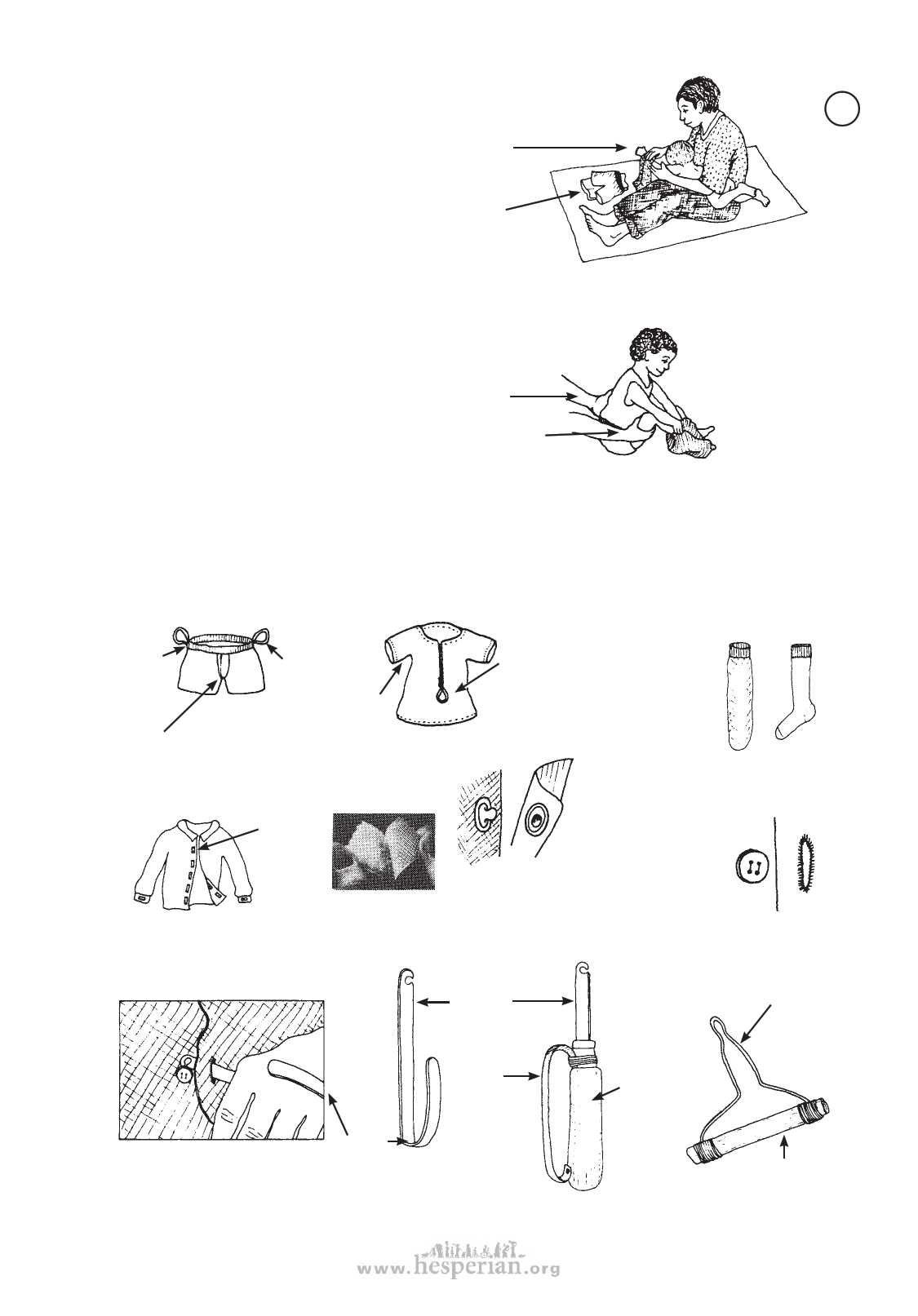
DRESSING 335
SUGGESTIONS FOR DRESSING
• If one arm or leg is more affected than the
other, it is easier if you put the clothes first
on the affected side.
cp
• Put the clothes where the child can see and
reach them easily, so he can help in any way
possible.
• If the arm is bent stiffly, first try to straighten it slowly, then put the sleeve
on. (If you try to straighten it forcefully or quickly, it may become more stiff.)
• If the legs straighten stiffly,
bend them gently in order to
put on pants or shoes.
Placing your hand on
her lower back will
help keep her hips
and legs bent.
Or you can help keep
her knee bent with
your hand.
This keeps the
legs relaxed
and gives her
better control.
• Begin any dressing activity for the child, but let him finish it for himself. Little by
little have him do more of the steps. If he can do it all by himself, give him time.
Do not hurry to do it for him if he is struggling to do it himself. Praise him when
he does well or tries hard.
• Use loose-fitting, easy-to-put-on clothing. Here are some ideas:
elastic
waist
bands
cloth loops
to help
pull up wide
sleeves
overlap fly without buttons
or zipper—or with Velcro
zipper
with loop
or knob
for easy
pulling
‘Tube socks’
(socks without
heels, that stretch
to fit foot) are
easier for the
child to put on.
easier
harder
no heel
Velcro tabs
instead of
buttons
Velcro
Press-together studs
(snaps) are easier to open
and close than buttons.
If buttons
are used, use
large buttons
and make
buttonholes
extra big.
• For children who have poor finger control, make a simple tool to button and
unbutton buttons.
thin, firm
strip of metal
(from old tin)
thin, stiff wire
end bent
to curve
around hand
strap for
holding on
hand if hand
is very weak
wood handle
(or old
tool handle)
round
piece
of wood
disabled village children